| # | Name | Photo | Date of rank [1] | Position [3] | Yrs [2] | Commission [4] | YC [5] | Notes [6] |
|---|
| 1 | Russell R. Waesche | 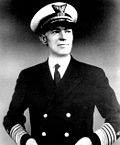 | 10 Mar 1942 | | 3 | 1906 (USRCSSI) [7] | 36 | (1886–1946) Commandant of the Coast Guard, with rank of admiral, 4 Apr 1945–1 Jan 1946. |
| 2 | Merlin O'Neill | 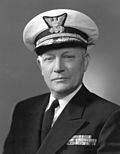 | 1 Jan 1950 | | 4 | 1921 (USCGA) | 29 | (1898–1981) Retired as admiral, 1 Jan 1954. |
| 3 | Alfred C. Richmond |  | 1 Jun 1954 | | 6 | 1924 (USCGA) | 30 | (1902–1984) Commandant of the Coast Guard, with rank of admiral, 1 Jun 1960–1 Jun 1962. |
| 4 | James A. Hirshfield | 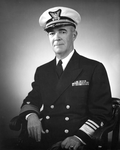 | 1 Jun 1960 | | 2 | 1924 (USCGA) | 36 | (1902–1993) |
| 5 | Edwin J. Roland | 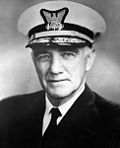 | 12 Feb 1962 | | 0 | 1929 (USCGA) | 33 | (1905–1985) Commandant of the Coast Guard, with rank of admiral, 1 Jun 1962–1 Jun 1966. |
| 6 | Donald M. Morrison |  | 3 Jul 1962 | | 2 | 1931 (USCGA) | 31 | (1906–1989) |
| 7 | William D. Shields |  | 8 Jul 1964 | | 2 | 1931 (USCGA) | 33 | (1907–1989) |
| 8 | Paul E. Trimble |  | 17 Jul 1966 | | 4 | 1936 (USCGA) | 30 | (1913–2004) |
| 9 | Thomas R. Sargent III |  | 1 Jul 1970 | | 4 | 1938 (USCGA) | 32 | (1914–2010) |
| 10 | Mark A. Whalen |  | 14 Oct 1972 | | 2 | 1937 (USCGA) | 35 | (1919–2002) |
| 11 | Benjamin F. Engel |  | 14 Oct 1972 | | 2 | 1938 (USCGA) | 34 | (1914–1983) |
| 12 | Ellis L. Perry |  | 1 Jul 1974 | | 4 | 1941 (USCGA) | 33 | (1919–2002) |
| 13 | William F. Rea III |  | 1 Jul 1974 | | 4 | 1941 (USCGA) | 33 | (1918–2004) |
| 14 | Joseph J. McClelland |  | 1 Jul 1974 | | 2 | 1940 (USCGA) | 34 | (1916–1981) |
| 15 | Austin C. Wagner |  | 30 Jun 1976 | | 2 | 1941 (USCGA) | 35 | (1919–2004) |
| 16 | Robert H. Scarborough Jr. |  | 1 Jul 1978 | | 4 | 1944 (USMMA) | 34 | (1923–2020) |
| 17 | Robert I. Price |  | 1 Jul 1978 | | 3 | 1945 (USCGA) | 33 | (1921–2019) |
| 18 | James S. Gracey |  | 1 Jul 1978 | | 4 | 1949 (USCGA) | 29 | (1927–2020) Commandant of the Coast Guard, with rank of admiral, 28 May 1982 – 30 May 1986. |
| 19 | James P. Stewart |  | 17 Jun 1981 | | 1 | 1946 (USCGA) | 35 | (1924–2019) |
| 20 | Wayne E. Caldwell |  | 21 May 1982 | | 2 | 1948 (USCGA) | 34 | (1923–2009) |
| 21 | Benedict L. Stabile |  | 22 May 1982 | | 4 | 1950 (USCGA) | 32 | (1927–2014) |
| 22 | Charles E. Larkin |  | 28 Jun 1982 | | 2 | 1949 (USCGA) | 33 | (1927– ) |
| 23 | Paul A. Yost Jr. |  | 1 Jul 1984 | | 2 | 1951 (USCGA) | 33 | (1929– ) Commandant of the Coast Guard, with rank of admiral, 30 May 1986 – 31 May 1990. |
| 24 | John D. Costello |  | 31 Jul 1984 | | 4 | 1952 (USCGA) | 32 | (1930–2014) |
| 25 | James C. Irwin |  | 16 May 1986 | | 5 | 1953 (USCGA) | 33 | (1929–2018) |
| 26 | Donald C. Thompson |  | 27 May 1986 | | 2 | 1952 (USCGA) | 34 | (1930–2022) |
| 27 | Clyde T. Lusk Jr. |  | Jun 1988 | | 2 | 1954 (USCGA) | 34 | (1932–2014) |
| 28 | Clyde E. Robbins |  | Jun 1988 | | 5 | 1954 (USCGA) | 34 | (1929– ) |
| 29 | Howard B. Thorsen |  | 31 Mar 1989 | | 2 | 1955 (USCGA) | 34 | (1933– ) |
| 30 | Martin H. Daniell Jr. |  | May 1990 | | 4 | 1957 (OCS) | 35 | (1935– ) |
| 31 | A. Bruce Beran | 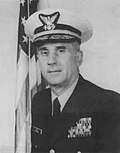 | 30 Jun 1990 | | 2 | 1957 (USCGA) | 33 | (1935– ) |
| 32 | Paul A. Welling |  | 28 Jun 1991 | | 3 | 1959 (USCGA) | 32 | (1938– ) |
| 33 | Robert T. Nelson |  | Jun 1992 | | 2 | 1958 (USCGA) | 34 | (1936– ) |
| 34 | Robert E. Kramek |  | Jul 1992 | | 2 | 1961 (USCGA) | 31 | (1939–2016) Commandant of the Coast Guard, with rank of admiral, 1 Jun 1994–30 May 1998. |
| 35 | Arthur D. Henn |  | Jun 1994 | | 2 | 1962 (USCGA) | 32 | (1940–2001) |
| 36 | James M. Loy |  | 23 Jun 1994 | | 4 | 1964 (USCGA) | 30 | (1942– ) Commandant of the Coast Guard, with rank of admiral, 30 May 1998 – 30 May 2002. Administrator, Transportation Security Administration, 2002–2003; U.S. Deputy Secretary of Homeland Security, 2003–2005. |
| 37 | Kent H. Williams |  | Jun 1994 | | 3 | 1965 (USCGA) | 31 | (1943– ) |
| 38 | Richard D. Herr |  | 1 Jul 1994 | | 4 | 1964 (USCGA) | 30 | (1941– ) |
| 39 | Roger T. Rufe Jr. |  | 1996 | | 3 | 1965 (USCGA) | 31 | (1943– ) |
| 40 | James C. Card |  | May 1997 | | 3 | 1964 (USCGA) | 33 | (1942– ) |
| 41 | Timothy W. Josiah |  | May 1998 | | 4 | 1969 (USCGA) | 29 | (c. 1947– ) |
| 42 | Thomas H. Collins |  | 1998 | | 4 | 1968 (USCGA) | 30 | (1946– ) Commandant of the Coast Guard, with rank of admiral, 30 May 2002 – 25 May 2006. |
| 43 | John E. Shkor |  | 3 Sep 1999 | | 2 | 1966 (USCGA) | 33 | (1944– ) |
| 44 | Ernest R. Riutta |  | 24 May 2000 | | 2 | 1968 (USCGA) | 32 | (c. 1946– ) |
| 45 | Thad W. Allen |  | Aug 2001 | | 5 | 1971 (USCGA) | 30 | (1949– ) Commandant of the Coast Guard, with rank of admiral, 25 May 2006 – 25 May 2010. |
| 46 | James D. Hull |  | 14 May 2002 | | 2 | 1969 (USCGA) | 33 | (c. 1947– ) |
| 47 | Thomas J. Barrett | 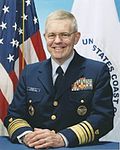 | 30 May 2002 | | 2 | 1969 (OCS) | 33 | (1947– ) Administrator, Pipeline and Hazardous Materials Safety Administration, 2006–2007; U.S. Deputy Secretary of Transportation, 2007–2009. |
| 48 | Terry M. Cross |  | Jul 2002 | | 4 | 1970 (USCGA) | 32 | (1947– ) |
| 49 | Harvey E. Johnson Jr. |  | Jun 2004 | | 2 | 1975 (USCGA) | 29 | (c. 1953– ) Deputy Administrator, Federal Emergency Management Agency, 2006–2009. |
| 50 | Vivien S. Crea |  | 16 Jul 2004 | | 5 | 1973 (OCS) | 31 | (1952– ) |
| 51 | Robert J. Papp Jr. |  | Apr 2006 | | 4 | 1975 (USCGA) | 31 | (1953– ) Commandant of the Coast Guard, with rank of admiral, 25 May 2010 – 30 May 2014. |
| 52 | D. Brian Peterman | 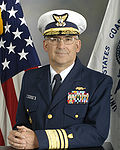 | 9 May 2006 | | 2 | 1972 (OCS) | 34 | (c. 1950– ) |
| 53 | Charles D. Wurster |  | May 2006 | | 2 | 1971 (USCGA) | 35 | (c. 1949– ) Brother of Air Force lieutenant general Donald C. Wurster. |
| 54 | David P. Pekoske |  | 29 May 2008 | | 2 | 1977 (USCGA) | 31 | (1955– ) Administrator, Transportation Security Administration, 2017–2025. |
| 55 | Clifford I. Pearson |  | Jun 2008 | | 1 | 1973 (OCS) | 35 | (c. 1951– ) |
| 56 | Jody A. Breckenridge |  | Jul 2009 | | 1 | 1976 (OCS) | 33 | (c. 1954– ) |
| 57 | John P. Currier |  | 6 Aug 2009 | | 5 | 1976 (OCS) | 33 | (1951–2020) |
| 58 | Robert C. Parker |  | 30 Apr 2010 | | 4 | 1979 (USCGA) | 33 | (1957– ) |
| 59 | Manson K. Brown |  | 17 May 2010 | | 4 | 1978 (USCGA) | 32 | (1956– ) U.S. Assistant Secretary of Commerce for Environmental Observation and Prediction, 2015–2017. |
| 60 | Sally Brice-O'Hara | 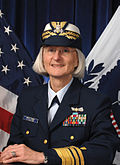 | 24 May 2010 | | 2 | 1975 (OCS) | 35 | (c. 1953– ) |
| 61 | Brian M. Salerno |  | 28 Mar 2011 | | 1 | 1976 (OCS) | 35 | (c. 1954– ) Director, Bureau of Safety and Environmental Enforcement, 2013–2017. |
| 62 | Paul F. Zukunft |  | 27 Apr 2012 | | 2 | 1977 (USCGA) | 35 | (1955– ) Commandant of the Coast Guard, with rank of admiral, 30 May 2014–1 Jun 2018. |
| 63 | Peter V. Neffenger |  | 3 May 2012 | | 3 | 1982 (OCS) | 30 | (1955– ) Administrator, Transportation Security Administration, 2015–2017. |
| 64 | Charles W. Ray |  | 22 Apr 2014 | | 4 | 1981 (USCGA) | 33 | (1959– ) Vice Commandant of the Coast Guard, with rank of admiral, 24 May 2018–18 Jun 2021. |
| 65 | Charles D. Michel |  | 2 May 2014 | | 2 | 1985 (USCGA) | 29 | (1963– ) Vice Commandant of the Coast Guard, with rank of admiral, 24 May 2016 – 24 May 2018. |
| 66 | William D. Lee |  | 16 May 2014 | | 2 | 1981 (OCS) | 33 | (c. 1959– ) |
| 67 | Sandra L. Stosz |  | 3 Jun 2015 | | 3 | 1982 (USCGA) | 33 | (1960– ) First woman to lead a U.S. service academy. |
| 68 | Fred M. Midgette |  | 11 Mar 2016 | | 3 | 1982 (USCGA) | 33 | (c. 1960– ) |
| 69 | Marshall B. Lytle III |  | 13 Jul 2016 | - Director, Command, Control, Communications and Computers/Cyber, J-6, Joint Staff, 2016–2018.
| 2 | 1981 (USCGA) | 35 | (1959– ) |
| 70 | Karl L. Schultz |  | 4 Aug 2016 | | 2 | 1983 (USCGA) | 33 | (1961– ) Commandant of the Coast Guard, with rank of admiral, 1 Jun 2018–1 Jun 2022. |
| 71 | Scott A. Buschman |  | 24 May 2018 | | 4 | 1984 (USCGA) | 34 | (1962– ) |
| 72 | Michael F. McAllister |  | 25 May 2018 | | 4 | 1986 (USCGA) | 32 | (1964– ) |
| 73 | Linda L. Fagan |  | 8 Jun 2018 | | 3 | 1985 (USCGA) | 33 | (1963– ) Vice Commandant of the Coast Guard, with rank of admiral, 18 Jun 2021–1 Jun 2022; Commandant of the Coast Guard, 1 Jun 2022–21 Jan 2025. |
| 74 | Daniel B. Abel |  | 18 Jun 2018 | | 2 | 1983 (USCGA) | 35 | (1961– ) |
| 75 | Steven D. Poulin |  | 1 Jul 2020 | | 2 | 1984 (USCGA) | 36 | (1962– ) Vice Commandant of the Coast Guard, with rank of admiral, 31 May 2022–13 June 2024. |
| 76 | Paul F. Thomas |  | 22 Jun 2021 | | 3 | 1985 (USCGA) | 36 | (1963– ) |
|
| 77 | Kevin E. Lunday |  | 24 May 2022 | | 2 | 1987 (USCGA) | 35 | (1965– ) Vice Commandant of the Coast Guard, with rank of admiral, 13 June 2024–present. |
|
| 78 | Peter W. Gautier |  | 24 Jun 2022 | | 3 | 1987 (USCGA) | 35 | (1965– ) |
|
| 79 | Andrew J. Tiongson |  | 8 Jul 2022 | | 3 | 1989 (USCGA) | 33 | (1967– ) |
| 80 | Nathan A. Moore |  | 16 May 2024 | | 1 | 1992 (USCGA) | 32 | (1970– ) |
| 81 | Thomas G. Allan Jr. |  | Jul 2024 | | 1 | 1990 (USCGA) | 34 | (1965– ) |













































































